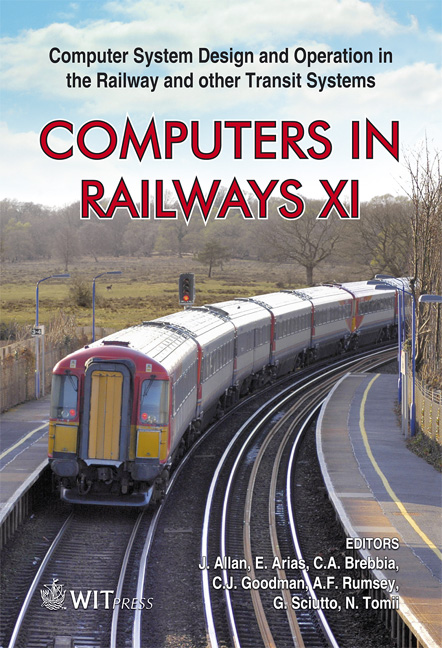Analyzing And Forecasting Railway Data Using Linear Data Analysis
Price
Free (open access)
Transaction
Volume
103
Pages
10
Page Range
25 - 34
Published
2008
Size
1,193 kb
Paper DOI
10.2495/CR080031
Copyright
WIT Press
Author(s)
E. T. Selig, G. M. Cardillo, E. Stephens & A. Smith
Abstract
Railways collect enormous amounts of data about the current state and use of their assets. Data collection system for work recording, track and rail measurement, asset databases, track charts, GIS maps, operations (scheduling), and engineering are required to operate a railway. The data from each of these systems have value on their own, but when aggregated together and analyzed produce a formerly untapped information source. The analysis of railway data is not new. What is new is that railways can now put in practice a continuous, consistent and controlled action and planning across the entire railway by automation of the analysis. This paper discusses the new and patent pending Analysis and Forecasting engine. The Engine is one of four parts of a system specifically designed to address the four Information Technology challenges of Corridor Infrastructure Management – 1: integration, 2: visualization, 3: data management, and 4: data analysis. The systems’ integration capabilities enable the connection of different data sources into a combined and linked data source. It provides visualization tools to \“see” information within a database of thousands of kilometres and terabytes of data. The system provides the necessary data maintenance tools for data import and alignment. The system provides processing tools and a database to efficiently store and maintain thousands of kilometres of data. The system enables railways to experiment and apply rules quickly and efficiently without needing to develop new software. The Analysis and Forecasting engine enables a simplified method for processing and analyzing the unified data. The four elements provide an enterprise-class Corridor Infrastructure Management (CIM) system to enable management of a reliable, safe, planned, and cost efficient railway.
Keywords





